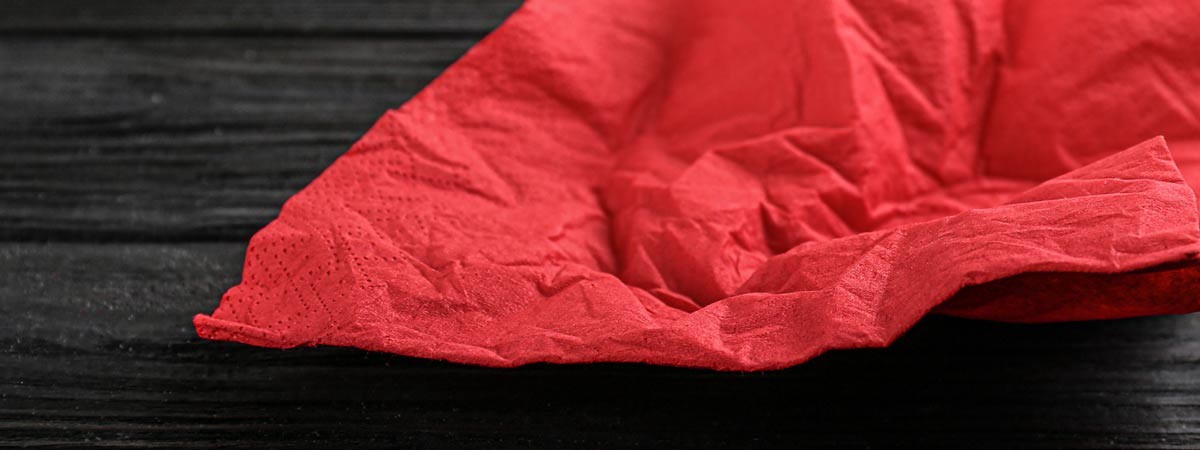Even the most mundane of household articles can have an interesting origin story. Paper napkins are one such item that draws very little attention to itself, but from idea to table, each napkin makes its way through many different production stages. These not-so-glamorous products have a role to fulfil, and a certain appearance that customers expect. Guiding the napkin to this look and functionality is where vacuum plays its part: Napkins are quite delicate products, and vacuum gives the gentle but secure hold they need to get there.

Keeping Napkins in Line
Straight cuts for a quick clean-up
They are something we reach for in a hurry, to fix a squirt of mustard gone in the wrong direction at a picnic, to mop up a spilled drink on a restaurant table. But as quickly as we use them and dispose of them, there is more to making a paper napkin than first meets the eye. Vacuum pumps from Busch accompany paper napkins throughout their production journey.
Even the most mundane of household articles can have an interesting origin story. Paper napkins are one such item that draws very little attention to itself, but from idea to table, each napkin makes its way through many different production stages. These not-so-glamorous products have a role to fulfil, and a certain appearance that customers expect. Guiding the napkin to this look and functionality is where vacuum plays its part: Napkins are quite delicate products, and vacuum gives the gentle but secure hold they need to get there.
Even the most mundane of household articles can have an interesting origin story. Paper napkins are one such item that draws very little attention to itself, but from idea to table, each napkin makes its way through many different production stages. These not-so-glamorous products have a role to fulfil, and a certain appearance that customers expect. Guiding the napkin to this look and functionality is where vacuum plays its part: Napkins are quite delicate products, and vacuum gives the gentle but secure hold they need to get there.
The origin of the humble paper napkin
Paper is believed to originate from China, so it follows that that is where the first documented paper napkins are also said to have been created, way back in the second century. While originally used exclusively when serving tea, at some point in their history, they made the move to being provided alongside food to wipe their user’s hands and face. However, it took centuries before they were first seen in the Western world, and at first, they were not well received. Society in the 1800s, used to cloth napkins, saw them as something a bit low-class and unnecessary – why change a system that works? As a result, paper napkins took a while to catch on. In fact, it was only in the middle of the 20th century that people finally began to see their advantages, starting the trend for the napkins we find at nearly every restaurant today.
Paper is believed to originate from China, so it follows that that is where the first documented paper napkins are also said to have been created, way back in the second century. While originally used exclusively when serving tea, at some point in their history, they made the move to being provided alongside food to wipe their user’s hands and face. However, it took centuries before they were first seen in the Western world, and at first, they were not well received. Society in the 1800s, used to cloth napkins, saw them as something a bit low-class and unnecessary – why change a system that works? As a result, paper napkins took a while to catch on. In fact, it was only in the middle of the 20th century that people finally began to see their advantages, starting the trend for the napkins we find at nearly every restaurant today.